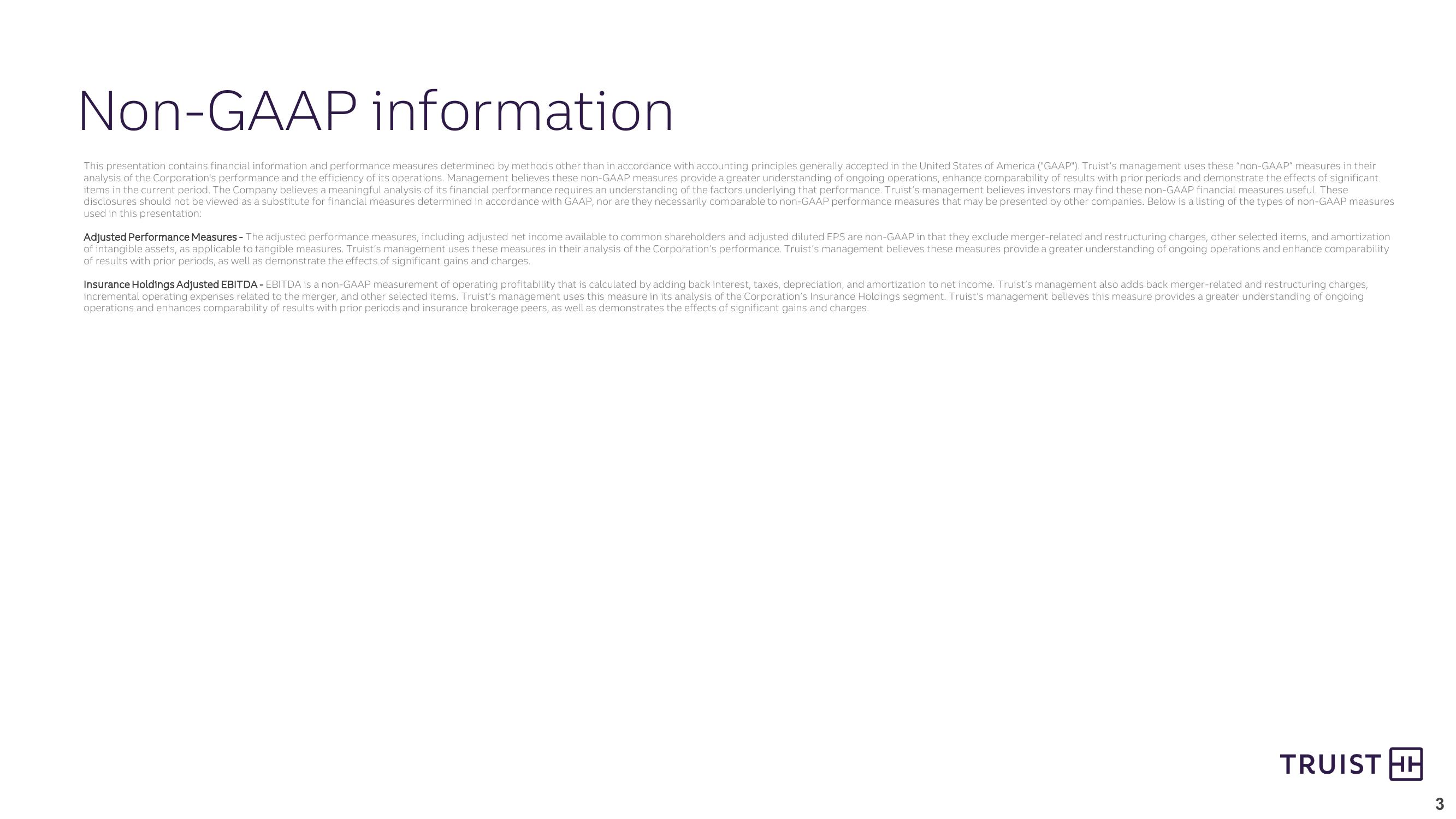Strategically Positioning Truist Insurance Holdings for Long-Term Success
Non-GAAP information
This presentation contains financial information and performance measures determined by methods other than in accordance with accounting principles generally accepted in the United States of America ("GAAP"). Truist's management uses these "non-GAAP" measures in their
analysis of the Corporation's performance and the efficiency of its operations. Management believes these non-GAAP measures provide a greater understanding of ongoing operations, enhance comparability of results with prior periods and demonstrate the effects of significant
items in the current period. The Company believes a meaningful analysis of its financial performance requires an understanding of the factors underlying that performance. Truist's management believes investors may find these non-GAAP financial measures useful. These
disclosures should not be viewed as a substitute for financial measures determined in accordance with GAAP, nor are they necessarily comparable to non-GAAP performance measures that may be presented by other companies. Below is a listing of the types of non-GAAP measures
used in this presentation:
Adjusted Performance Measures - The adjusted performance measures, including adjusted net income available to common shareholders and adjusted diluted EPS are non-GAAP in that they exclude merger-related and restructuring charges, other selected items, and amortization
of intangible assets, as applicable to tangible measures. Truist's management uses these measures in their analysis of the Corporation's performance. Truist's management believes these measures provide a greater understanding of ongoing operations and enhance comparability
of results with prior periods, as well as demonstrate the effects of significant gains and charges.
Insurance Holdings Adjusted EBITDA - EBITDA is a non-GAAP measurement of operating profitability that is calculated by adding back interest, taxes, depreciation, and amortization to net income. Truist's management also adds back merger-related and restructuring charges,
incremental operating expenses related to the merger, and other selected items. Truist's management uses this measure in its analysis of the Corporation's Insurance Holdings segment. Truist's management believes this measure provides a greater understanding of ongoing
operations and enhances comparability of results with prior periods and insurance brokerage peers, as well as demonstrates the effects of significant gains and charges.
TRUIST HH
3View entire presentation